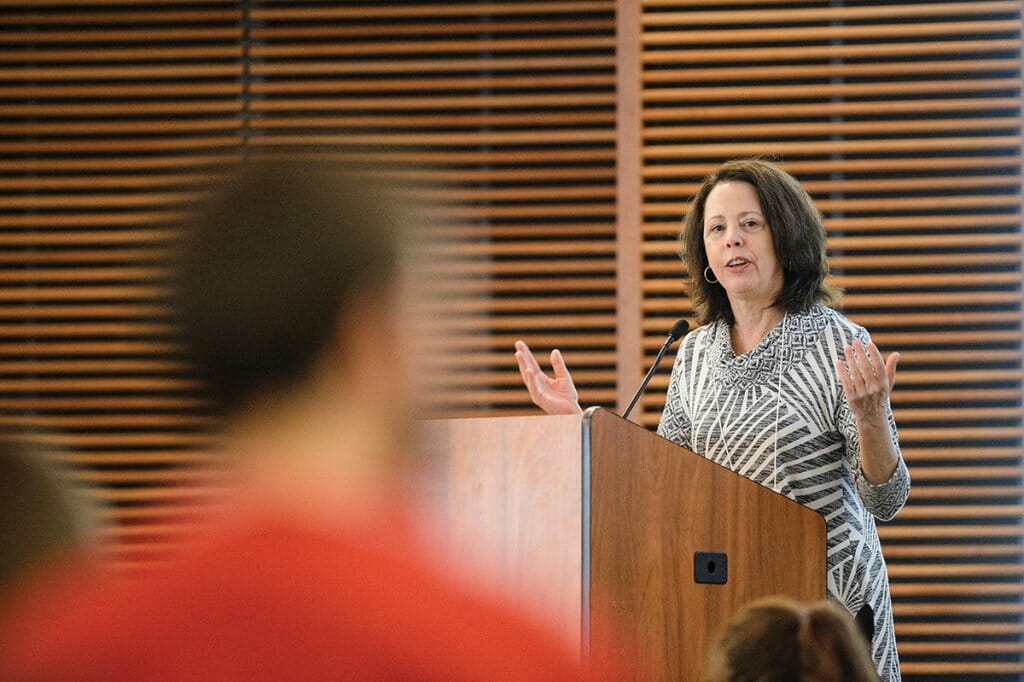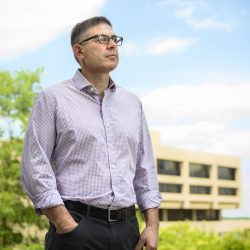I Pledge Allegiance to the Class
The UW School of Education has a plan for keeping teachers on the job.

“We can improve the standard of living by ensuring that students don’t have a lot of student loan debt,” says Hess. Bryce Richter
As America — and Wisconsin — try to navigate a deepening shortage of K–12 teachers, the UW–Madison School of Education is working to inspire more people to enter the profession. The Wisconsin Teacher Pledge gives students a chance to have their tuition waived if they promise to spend several years teaching at Wisconsin schools.
The National Education Association estimates that the United States has 300,000 fewer teachers than it needs, and in Wisconsin, 74 percent of school districts report being unable to fill positions. In August 2020, the School of Education announced the Teacher Pledge as part of its Impact 2030 campaign: tuition forgiveness for all students who promise to teach in the state for at least four years, or three years in high-need subjects or school districts.
“Salaries in Wisconsin are very low for teachers,” says Diana Hess, the dean of the School of Education. “We can’t do anything directly to improve the salaries, but we can improve the standard of living by ensuring that students don’t have a lot of student loan debt.”
To be eligible for tuition forgiveness, students make the pledge when they’re admitted to a teacher education program, usually after their sophomore year or when they enter as graduate students. The school gives those students a loan that covers tuition and then forgives a percentage of that loan as the students fulfill each year of teaching after they graduate. Hess believes that, after at least three years of working as a teacher, people are likely to commit to the profession for much longer.
But Hess says that the pledge is about more than attracting people into the teaching profession. It’s also a live study to see if the loan forgiveness program really does keep teachers in the profession long-term.
“We’re trying to find out, essentially, does it work and does it work to hit those goals?” Hess says. If the data back that up, she hopes to see the pledge program expand.
Currently about 500 students have taken the Teacher Pledge, and Hess is seeking funding to continue the program into the future.
Published in the Winter 2022 issue



Comments
No comments posted yet.